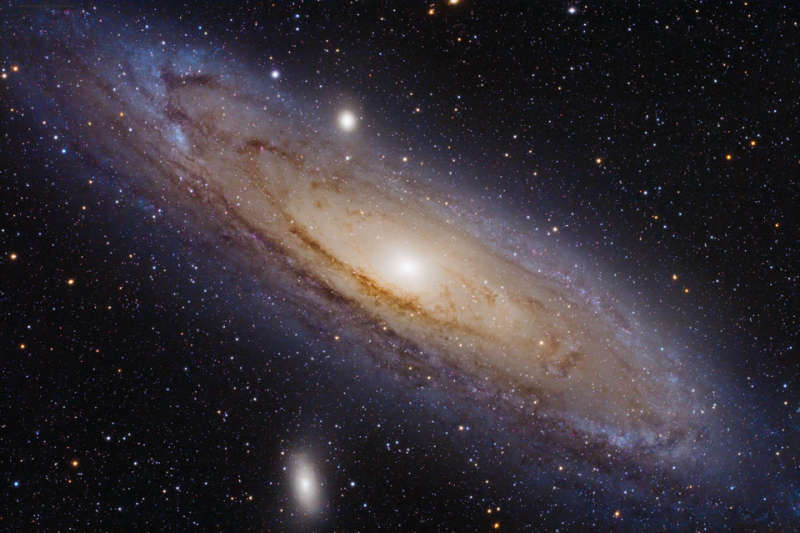
|
Credit & Copyright: Lorenzo
Comolli
Explanation:
Andromeda is the nearest major
galaxy to our own
Milky Way Galaxy.
Our Galaxy is thought to look much like
Andromeda.
Together these two galaxies dominate the
Local Group of galaxies.
The diffuse light from
Andromeda
is caused by the hundreds of billions of
stars that compose it.
The several distinct stars that surround
Andromeda's image
are actually stars in
our Galaxy
that are well in front of the background object.
Andromeda is frequently referred to as
M31
since it is the 31st object on
Messier's list of diffuse sky objects.
M31 is so distant it takes
about two million years for light to reach us from there.
Although visible without aid, the
above image of M31 was taken with a small telescope.
Much about M31
remains unknown, including how it acquired
its unusual
double-peaked center.
|
January February March April May June July August September October November December |
| ||||||||||||||||||||||||||||||||||||||||||||||||
NASA Web Site Statements, Warnings, and Disclaimers
NASA Official: Jay Norris. Specific rights apply.
A service of: LHEA at NASA / GSFC
& Michigan Tech. U.
Based on Astronomy Picture
Of the Day
Publications with keywords: M 31 - Andromeda galaxy
Publications with words: M 31 - Andromeda galaxy
See also:
- APOD: 2025 August 6 Á Meteor before Galaxy
- Hubble s Andromeda Galaxy Mosaic
- NGC 206 and the Star Clouds of Andromeda
- APOD: 2024 September 8 Á M31: The Andromeda Galaxy
- APOD: 2023 November 13 Á Andromeda over the Alps
- The Once and Future Stars of Andromeda
- APOD: 2023 August 23 Á The Meteor and the Galaxy
